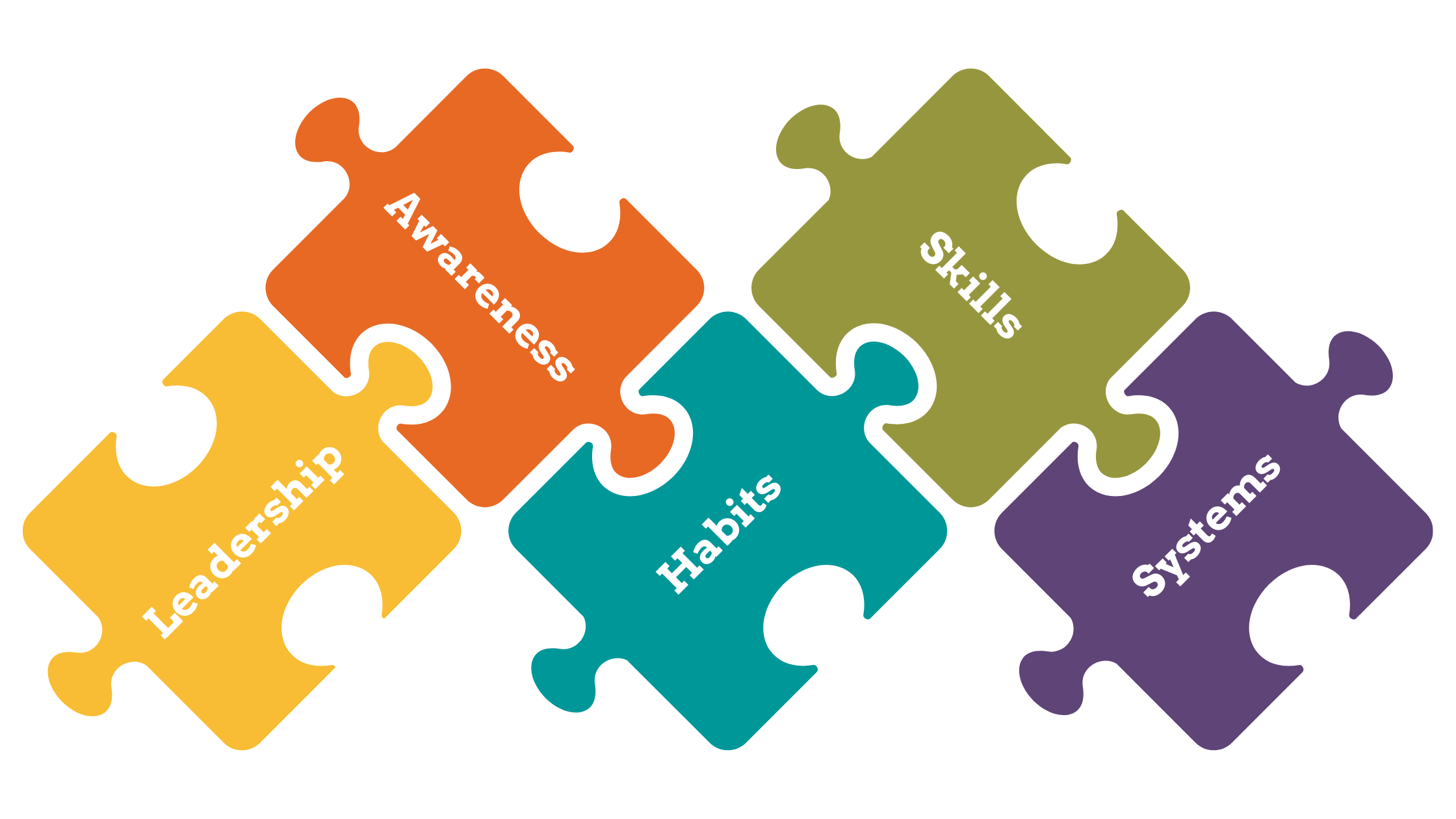Psychological Safety Isn’t a Vibe - It’s These 5 Things

A deeper look at what really creates a high-trust, high-performing team.
You Can't Build What You Can't Name
Most leaders know psychological safety is important. Fewer can describe what it actually looks like, feels like, or how to strengthen it.
They assume it’s about being nice. Or avoiding conflict. Or creating “good vibes.”
It’s not.
Psychological safety is the shared belief that a team is safe for interpersonal risk. But more than that, it’s the fuel for innovation, ownership, engagement, and trust. When it’s missing, everything from performance to morale starts to break down.
And here’s what most leadership books don’t tell you: Psychological safety isn’t a personality trait, a team culture, or a feeling.
It’s a capacity.
It’s measurable.
And it can be built on purpose.
Here’s what actually drives psychological safety and how you can strengthen each one.
1. Create Awareness: You Can't Change What You Can't See
Most people don’t even have a name for what’s missing, let alone the language to talk about it.
That awkward silence in meetings...
The hesitation to give honest feedback...
The group chat that lights up after the real meeting ends...
These dynamics often go unnamed. And if you don’t name it, you can’t shift it.
Start by building awareness:
- Help your team understand what psychological safety actually is
- Normalize naming and talking about it
- Use tools like the Fearless Organization Scan or guided reflection prompts to surface what’s really happening
Without awareness, every solution is a guess. With it, you unlock real change.
2. Look at the System: The Way Work Gets Done Shapes the Culture
Even well-meaning leaders unintentionally create systems that erode safety. Think about it:
- Performance reviews that surprise people with only corrective feedback
- Decision-making processes that happen in closed rooms without input
- Recognition that rewards speed and conformity over curiosity and challenge
These aren’t just logistical choices. They’re loud signals about what’s safe and what’s not.
If your system punishes mistakes or questions, no “open-door policy” will fix it.
Systems drive behavior. If you want to shift behavior, look at the system underneath.
3. Skills and Thinking: People Need to Know How to Do This Work
Psychological safety doesn’t mean avoiding tension. It means learning how to navigate it well. But most people haven’t been taught how to:
- Disagree without defensiveness
- Give feedback in ways that strengthens trust
- Think collaboratively across differences
- Work through uncertainty or failure without shutting down
These aren’t soft skills, they’re essential to creating a high performing team.
And they’re teachable.
If you want your team to show up with more courage, connection, and creativity, give them the tools to do it.
Explore Skills-Based Workshops to build these capacities from the inside out.
4. Habits: Safety Lives in the Day-to-Day Details
Psychological safety isn’t built once, it’s built daily in the micro-moments. Ask yourself:
- Who speaks first in a meeting? And who gets interrupted?
- What happens when someone takes a risk and it doesn’t work out?
- How are new ideas handled: welcomed, dismissed, quietly ignored?
- Is there room to say, “I don’t know” or “I changed my mind”?
Our everyday behaviors either reinforce safety or erode it.
It’s not about being perfect, it’s about being consistent. Change the habits, and the culture will follow.
5. Make It a Leadership Focus: Tend Both Content and Context
Great leaders do more than manage tasks; they create the capacities needed for work to thrive.
This means keeping one eye on the content of the work and one on the context: how the work gets done.
You don’t have to fix every issue yourself. But you do need to notice when something’s off and prioritize making it better.
That might mean bringing in outside support, reallocating time, naming a dynamic in the room, or adjusting expectations so people can actually do their best thinking.
When you treat psychological safety as a leadership priority, not an afterthought, it becomes part of your team’s DNA.
Want support learning how to lead this kind of culture work? Check out the Empowered Leader Program - designed for busy leaders who want real results.
This Isn't Soft Stuff. It's What Makes the Hard Stuff Possible
Psychological safety isn’t just about feelings - it’s what allows your team to do the hard, important work. Without it, teams get quieter. Slower. Smaller. With it, they rise to the challenge.
When psychological safety is present, here’s what starts to happen:
- Ideas are challenged without people attacking each other
- Feedback flows in all directions, not just top-down
- Mistakes get shared, not buried, because learning matters more than blame
- New hires speak up by week two, not year two
- Meetings include real disagreement, not just polite silence
- Leaders say, “I don’t know, what do you think?”, and mean it
- People take smart risks and reflect deeply, because that’s part of the job
- Complex problems are tackled instead of avoided
- Decisions are challenged and blind spots surfaced before they become big mistakes
- People take real ownership of their work, instead of just executing tasks
- Teams innovate instead of playing it safe
This isn’t fluff. It’s the foundation of high performance.
You can’t solve hard problems without tension. You can’t innovate without risk. And you can’t grow if people are afraid to speak.
If you want to build a team that thinks deeply, challenges boldly, and delivers big, you need psychological safety.
And if you’re not sure where to start, we can help.
Want More?
Want a deeper guide? Download the Psychological Safety eBook: A Leader’s Guide to Unlocking Team Performance.
Ready to get data on where your team stands? Start with the Fearless Organization Scan.
Need help leading the change? Check out Empowered Leader or our Skills-Based Workshops to go deeper.
